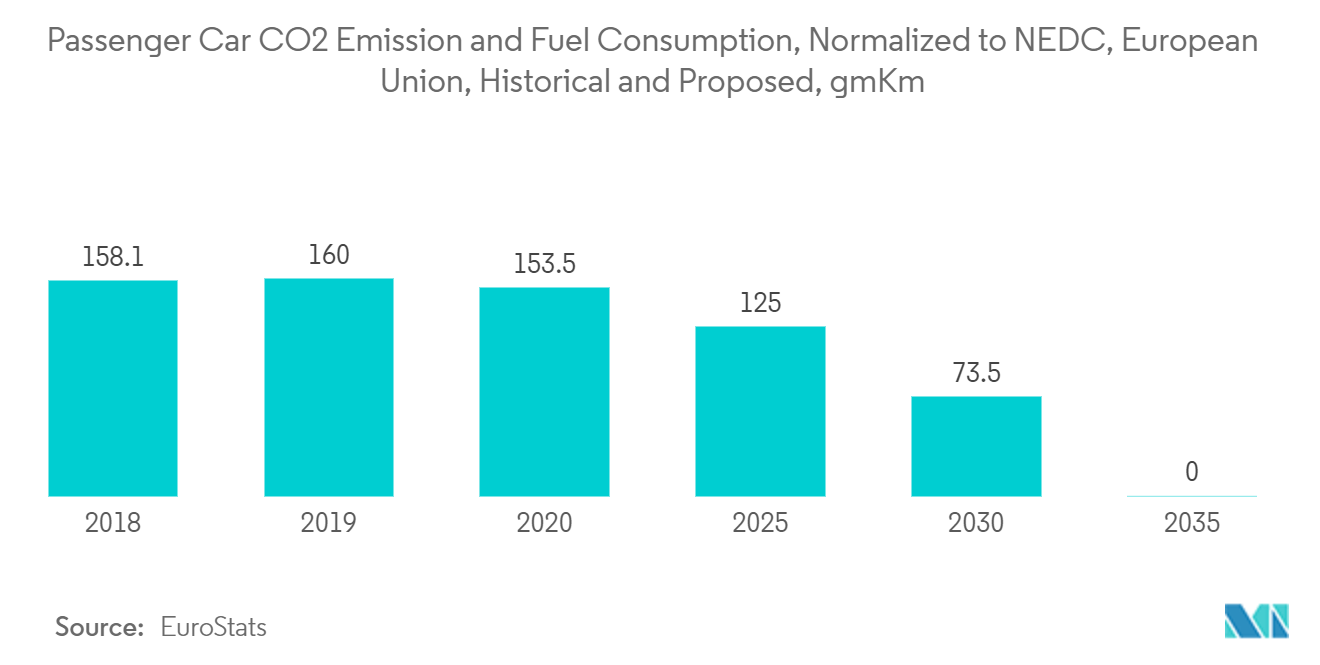Market Trends of Automotive Intercooler Industry
Increasing Adoption of Turbochargers is likely to Drive the Market Growth
The growth of the intercooler market is directly related to the automotive turbocharger market. The introduction of new emission legislations in Europe (Euro6d), India (BS-VI), and China (China VIb) increased pressure on the automotive industry to develop new and better exhaust gas after-treatment and combustion systems.
Smaller turbocharged engines can deliver similar power output to larger naturally aspirated engines, resulting in improved fuel efficiency. It is particularly beneficial for smaller engines used in passenger cars, allowing them to deliver the performance traditionally associated with larger engines. Turbochargers provide the "boost" needed for quick acceleration and increased power on demand.
Eleven countries set or proposed fuel economy or greenhouse gas emission criteria for passenger cars, light commercial vehicles, and trucks. These restrictions, which cover more than 80% of global passenger vehicle sales, influence the economic decisions of major vehicle manufacturers worldwide and are among the most successful climate-change mitigation measures introduced in the last decade.
Consumers increasingly prioritize fuel efficiency without sacrificing performance. Turbocharged engines provide a balance between power and efficiency, meeting the expectations of customers who desire both performance and better fuel economy. As consumer preferences shift towards turbocharged vehicles, automakers respond by offering turbocharged options across their model lineups. For instance,
In May 2022, General Motors was looking forward to manufacturing a new twin-turbocharged six-cylinder gasoline engine. The turbocharger and engine shall be produced for pickup trucks and SUVs.
These factors collectively drive the demand for automotive turbochargers as they align with the industry's goals of meeting regulatory requirements, enhancing performance, improving fuel efficiency, and adapting to evolving market trends.
Moreover, E-Turbo can electrically recuperate spent or otherwise wasted exhaust energy by using a small motor to generate electricity and recharge the hybrid battery. According to the company, the first application of E-Turbo is likely to emerge in premium, high-performance vehicles from 2021 onward, and future applications may begin to appear in other segments leading up to 2025. This ability to be an onboard provider of electricity opens options for automakers in designing hybrid powertrains.
In light of the improvement in the technology of turbochargers, the demand for turbocharged vehicles is expected to increase, which may lead to an increase in demand for intercoolers during the forecast period.

Asia-Pacific Region Expected to Play Key Role in the Market
Asia-Pacific is likely to hold a significant share in the automotive intercooler in the wake of growing automotive sales in the region, coupled with technological advancements, such as two-stage supercharging. It compresses air and, transfers it back to the engine and enhances power in the vehicle. It is one of the factors increasing the demand for intercoolers in the market.
Further, an increase in the production of passenger cars and stringent government regulations for fuel economy standards is also surging the sales of intercoolers. The market is also supported by the growing presence of key automotive players and their active strategies, like launching new models and offering advanced solutions to their customers to maximize their market share in the region. Such developments are anticipated to encourage intercooler component manufacturers in the vehicles over the forecast period. For instance,
- In October 2022, PT Toyota-Astra Motor (TAM), along with the launch of the all-new Land Cruiser SUV, introduced the new Fortuner as an ever-better car that is now equipped with a choice of a new diesel engine coded 1GD-FTV. This 2,755-cc 1GD FTV, In-Line 4 cylinders, 4 valves, and DOHC. The VNT Intercooler engine delivers a maximum power of 203.9 PS from 3,000 - 4,000 RPM and 50.9 kgm of torque from 1,600 - 2,800 RPM.
- In August 2022, MG Extender was showcased at the Gaikindo Indonesia International Auto Show 2022 (GIIAS2022) ahead of its official launch locally in the near future. This pickup truck comes with a diesel engine with a capacity of 2,000 ccs, 16 Valve Turbo Intercooler paired with a 6-speed automatic transmission, and four alloy wheels measuring 255/60 R18.
Many companies provide direct replacement of intercoolers and custom intercoolers for modern, classic, or racing cars as per the customer's requirement and offer a warranty for replacement parts. This factor is increasing the aftermarket as well for automotive intercoolers in many countries across the Asia-Pacific region.


